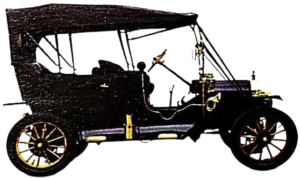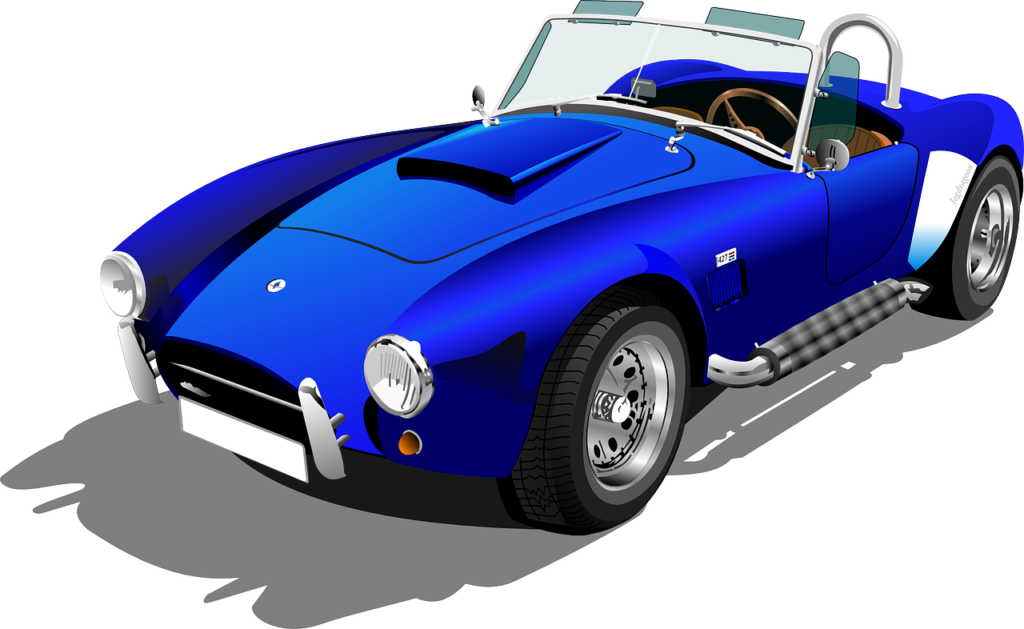Automobile:
An automobile is a self-propelled vehicle designed primarily for the transportation of people and goods on roads. It typically consists of four wheels, an internal combustion engine (or, in some cases, an electric motor), and is powered by gasoline, diesel, or electricity. Automobiles are commonly known as cars and are widely used for personal, commercial, and industrial purposes.
Examples: Bus, Car, jeep, truck, tractor, scooter, motorcycle etc. In other words,
Automobile engineering is a branch of engineering in which we study all about the automobiles and have practice to propel them.
AUTO + MOBILE
SELF MOVING


A locomotive is a self-propelled vehicle usually electric, or diesel powered for pulling or pushing weight or passenger cars on railroad tracks.
An automobile is a usually four-wheeled vehicle designed primarily for passenger transportation and commonly propelled by an internal-combustion engine using a volatile fuel.

The Evolution of Automobiles:
The automobile industry has been one of the most transformative forces in human history. From the first motorized vehicles to today’s electric cars, the journey of automobiles has been marked by continuous innovation, remarkable design, and technological breakthroughs. In this article, we’ll explore how automobiles have evolved over the years and what the future might hold for this ever-changing industry.
Birth of the Automobile:
The first car that could truly be called an “automobile” was built by Karl Benz in 1885, known as the Benz Patent-Motorwagen. This three-wheeled vehicle was powered by a single-cylinder four-stroke engine and was considered the world’s first practical automobile. However, the transition from horse-drawn carriages to self-propelled vehicles didn’t happen overnight.
The early 1900s saw the introduction of mass production techniques, notably by Henry Ford with his assembly line. The Ford Model T, released in 1908, is widely regarded as one of the most significant cars in history, making automobiles affordable and accessible to the average person. This marked the start of the automobile’s journey from a luxury item to a mainstream necessity.
Classification of Automobiles
Automobiles can be classified with different regards as under:
1 Purpose:
The main two purpose of Automobile are: – Transport the people from one place to another – Transport the goods & other materials from one place to another
• Automobiles are used mainly for commercial and personal reason.
(i) Passenger carriers – Car, Jeep, Buses etc.
(ii) Goods Carriers – truck etc.
(i) Petrol Vehicle- Motor cycle, Scooters, Cars, Station wagons.
(ii) Diesel Vehicle- Truck, Buses, etc.
(iii) Gas Vehicle – Coal gas turbines.
(iv) Electric Vehicle- Using storage batteries.
(v) Steam – Using steam engines.
3 Capacity:
(i) Heavy Transport Vehicle (HTV) – Trucks, Buses, Dumpers etc.
or Heavy motor Vehicle (HMV)
(ii) Light Transport Vehicle (LTV) -Pickup, Station wagons etc.
(iii) Light Motor Vehicle (LMV) – Jeep. Cars etc.
(iv) Medium Vehicle – Station Wagon, Tempo, Minibus & small trucks.
4 Construction:
(i) Single Unit vehicle.
(ii) Articulated Vehicle & tractors.
5 Drive:
(i) Left hand drive – Steering wheel fitted on the left-hand side.
(ii) Right hand drive – Steering wheel fitted on the right-hand side.
(iii) Fluid drive – Vehicle employing torque converter, fluid flywheel or hydromantic transmission.
6 Suspension System:
(i) Conventional – Leaf Spring
(ii) Independent- Coil Spring, Torsion bar, Pneumatic etc.
7 Wheel & Axle:
(i) Two-Wheeler – Autocycle, Moped, Scooter & Motorcycle.
(ii) Three-Wheeler – Three-wheeler scooter, Auto rickshaw & Tempo.
(iii) Four-Wheeler – Car, Jeep, Pickup etc.
(iv) Six-Wheeler – Six-wheeler having two gear axles each having four wheels. Vehicles are classified by number of wheels & number of drive wheels where it is written 4×2 or 4×4 drive etc.
8 Body & number of Doors:
(i) Sedan – Two doors & four door types.
(ii) Convertible – Jeep, imported cars etc.
(iii) Station wagons.
(iv) Delivery van/pickups.
(v) Special purpose Vehicles – Ambulance, Milk Van, Mobile Workshop, Mobile hospital etc.
9 Transmission:
(i) Conventional- All Indian vehicles.
(ii) Semi-Automatic – Most of British & Japanese vehicles.
(iii) Automatic – Most of the American vehicles.
The Rise of Safety and Comfort:
As automobiles became more widespread, car manufacturers began to shift focus toward improving safety, comfort, and performance. The post-WWII era saw many technological advancements, including the introduction of seat belts, better suspension systems, and more powerful engines.
In the 1950s and 1960s, the automobile industry experienced a golden age, with iconic models such as the Chevrolet Corvette and the Ford Mustang. These cars combined power with style, attracting a generation of car enthusiasts. Automakers began to experiment with designs that were not only functional but also eye-catching.
The 1970s brought the fuel crisis, which led to an increased focus on fuel efficiency. During this period, small and more economical cars began to gain popularity. Car manufacturers began implementing more advanced fuel-efficient technologies, which would later evolve into the hybrids and electric cars of today.
The Age of Technology:
The 1990s marked the beginning of the digital revolution in the automobile industry. Cars began to incorporate more advanced technologies such as airbags, anti-lock brakes (ABS), traction control, and later, stability control systems. These innovations improved both the safety and the driving experience for consumers.
In the 21st century, the automobile has become increasingly sophisticated with the integration of technologies like GPS navigation systems, Bluetooth connectivity, and advanced infotainment systems. Cars are now smarter than ever before, offering features like automatic parking, lane departure warnings, and adaptive cruise control.
Perhaps the most significant change in recent years has been the development of electric vehicles (EVs). Driven by growing environmental concerns and advancements in battery technology, EVs are reshaping the future of transportation. Tesla has been at the forefront of this revolution, making electric cars mainstream with models like the Model S and Model 3. Other major automakers, such as General Motors, Ford, and Volkswagen, have also committed to expanding their electric vehicle offerings in the coming years.
The Future of Automobiles:
Autonomous and Green Technology
Looking ahead, the future of automobiles is set to be defined by two major trends: autonomous driving and sustainability.
Autonomous Vehicles
Self-driving cars have long been a dream of futurists, but advancements in artificial intelligence, machine learning, and sensor technology are rapidly bringing this dream closer to reality. Companies like Waymo (Google’s self-driving car division), Tesla, and many others are working toward making autonomous vehicles a common sight on the road. While there are still technical and regulatory challenges to overcome, the potential for autonomous cars to reduce accidents, improve traffic flow, and provide greater convenience is undeniable.
Green Technology
The push for sustainability is also shaping the future of the automobile. As concerns about climate change intensify, automakers are investing heavily in cleaner technologies. Electric vehicles are at the forefront of this movement, but hydrogen fuel cells, biofuels, and advancements in battery storage are also playing important roles. Governments worldwide are setting stricter emissions regulations and providing incentives to encourage the adoption of green vehicles, leading to a significant shift toward eco-friendly transportation.
Conclusion
From the early days of the automobile to the cutting-edge technologies of today, the evolution of cars has been an exciting journey. Automobiles have become safer, smarter, and more sustainable over the years. With autonomous driving and green technology on the horizon, the future promises to bring even more changes to the world of cars.
The automobile industry has come a long way, and there’s no doubt that it will continue to shape our lives in profound ways. As technology advances and new challenges emerge, the next chapter of the automobile’s evolution is bound to be just as revolutionary as the last.
An automobile is a self-propelled vehicle driven by an internal combustion engine and is used for transportation of passengers and goods on ground.
Examples: Bus, Car, jeep, truck, tractor, scooter, motorcycle etc. In other words,
Automobile engineering is a branch of engineering in which we study all about the automobiles and have practice to propel them.
A locomotive is a self-propelled vehicle usually electric, or diesel powered for pulling or pushing weight or passenger cars on railroad tracks.